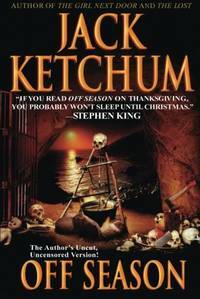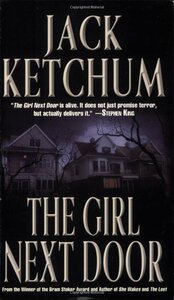Take a photo of a barcode or cover
leeglenwright_author's Reviews (55)
Disclaimer: I read this book years ago, so my memory of it is a little sketchy in places. The fact remains however, that some of the stories and vignettes in it made such an impression on me that they've stayed with me all this time. For that reason, I think it warrants an attempt at a review. Still with me? Good, here goes...
The Little Book of Horrors (Tiny Tales of Terror) does exactly what it says on the tin. Mainly comprised of what is nowadays referred to as 'flash fiction' (herein called 'short-short' stories, many of which are shorter than this review), with an accompaniment of vignettes, traditional folk tales and even ghoulish facts, a lot is crammed into what is a pretty slim volume. The book succeeds in showcasing the ability of its featured writers to flesh out an entire story in only a few pages, a single page or sometimes less.
Some of the stand-out contributions that I remember are a rare piece of single-page fiction by Roald Dahl, several excerpts from 'In His Own Write' by John Lennon, a story about a very large and hungry god ('Thang,' by Martin Gardner) and others, from a selection too broad and numerous to mention. As would probably be expected from the number of contributors, there is some variation in consistency, but there is more than enough contained between the covers to keep most readers happy, especially suited to whiling away a few minutes here and there. Special mention should be given to Joe R Lansdale, who I first read in this book. His two contributions, 'Dog, Cat and Baby,' and 'Chompers,' are still two of the best examples of flash fiction I have ever read, 'Dog, Cat and Baby' in particular being the sort of story that literally begs to be read aloud to a friend. Try it for yourself; I have.
With black and white illustrations from the likes of Edward Gorey and Aubrey Beardsley, 'The Little Book of Horrors' is a great addition to the bookshelf of any lover of macabre fiction with a dash of pitch black humour.
The Little Book of Horrors (Tiny Tales of Terror) does exactly what it says on the tin. Mainly comprised of what is nowadays referred to as 'flash fiction' (herein called 'short-short' stories, many of which are shorter than this review), with an accompaniment of vignettes, traditional folk tales and even ghoulish facts, a lot is crammed into what is a pretty slim volume. The book succeeds in showcasing the ability of its featured writers to flesh out an entire story in only a few pages, a single page or sometimes less.
Some of the stand-out contributions that I remember are a rare piece of single-page fiction by Roald Dahl, several excerpts from 'In His Own Write' by John Lennon, a story about a very large and hungry god ('Thang,' by Martin Gardner) and others, from a selection too broad and numerous to mention. As would probably be expected from the number of contributors, there is some variation in consistency, but there is more than enough contained between the covers to keep most readers happy, especially suited to whiling away a few minutes here and there. Special mention should be given to Joe R Lansdale, who I first read in this book. His two contributions, 'Dog, Cat and Baby,' and 'Chompers,' are still two of the best examples of flash fiction I have ever read, 'Dog, Cat and Baby' in particular being the sort of story that literally begs to be read aloud to a friend. Try it for yourself; I have.
With black and white illustrations from the likes of Edward Gorey and Aubrey Beardsley, 'The Little Book of Horrors' is a great addition to the bookshelf of any lover of macabre fiction with a dash of pitch black humour.
I can't really review this, as I wrote it. Objectively though, it holds up better than my rampant imposter syndrome led me to believe.
dark
sad
medium-paced
Plot or Character Driven:
A mix
Strong character development:
Complicated
Loveable characters:
Complicated
Diverse cast of characters:
Yes
Flaws of characters a main focus:
Yes
So much has been said about this book already, especially regarding its more extreme content and 'inspired by true events' subject matter, there's not really a hell of a lot I can add. While I don't want to rehash countless other reviews here, I'll admit that it isn't straightforward to avoid doing so.
To call 'The Girl Next Door' a gruelling read would be an understatement and, yes, that comes in part from a knowledge of the events that inspired it. I'll be honest here, even at a relatively short 250 or so pages, it took me a while to get through - mainly due to the fact that I put the book aside on several occasions, almost giving up each time. The graphic descriptions of brutality - of human brutality - are at times genuinely hard to stomach. However, if anyone were to find themselves in the same predicament, I would urge them to stick with it. Ketchum's prose is lean, taut, stripped of anything that needn't be there. Through the eyes of the story's young protagonist, the violence (and yes, make no mistake, it is violent) is observed without being leered at. Any hack can write gore and violence. To write honest-to-God pain takes real skill. And in The Girl Next Door, pain quite literally bleeds out of the pages. The pain of the victim, as well as that of the protagonist also, a adult scarred by the past, reflecting upon the horror of his youth and the pain of choosing between what is right and what he knows to be wrong. With simple, childlike reasoning, the decision is laid out: whether to follow the herd mentality or stand against what constitutes a very pure, very real evil.
By turns painful, heart-rending and even (believe it or not) uplifting with the lessons it imparts, The Girl Next Door is not an easy read, far from it.
But nothing truly rewarding is ever easy.
To call 'The Girl Next Door' a gruelling read would be an understatement and, yes, that comes in part from a knowledge of the events that inspired it. I'll be honest here, even at a relatively short 250 or so pages, it took me a while to get through - mainly due to the fact that I put the book aside on several occasions, almost giving up each time. The graphic descriptions of brutality - of human brutality - are at times genuinely hard to stomach. However, if anyone were to find themselves in the same predicament, I would urge them to stick with it. Ketchum's prose is lean, taut, stripped of anything that needn't be there. Through the eyes of the story's young protagonist, the violence (and yes, make no mistake, it is violent) is observed without being leered at. Any hack can write gore and violence. To write honest-to-God pain takes real skill. And in The Girl Next Door, pain quite literally bleeds out of the pages. The pain of the victim, as well as that of the protagonist also, a adult scarred by the past, reflecting upon the horror of his youth and the pain of choosing between what is right and what he knows to be wrong. With simple, childlike reasoning, the decision is laid out: whether to follow the herd mentality or stand against what constitutes a very pure, very real evil.
By turns painful, heart-rending and even (believe it or not) uplifting with the lessons it imparts, The Girl Next Door is not an easy read, far from it.
But nothing truly rewarding is ever easy.



